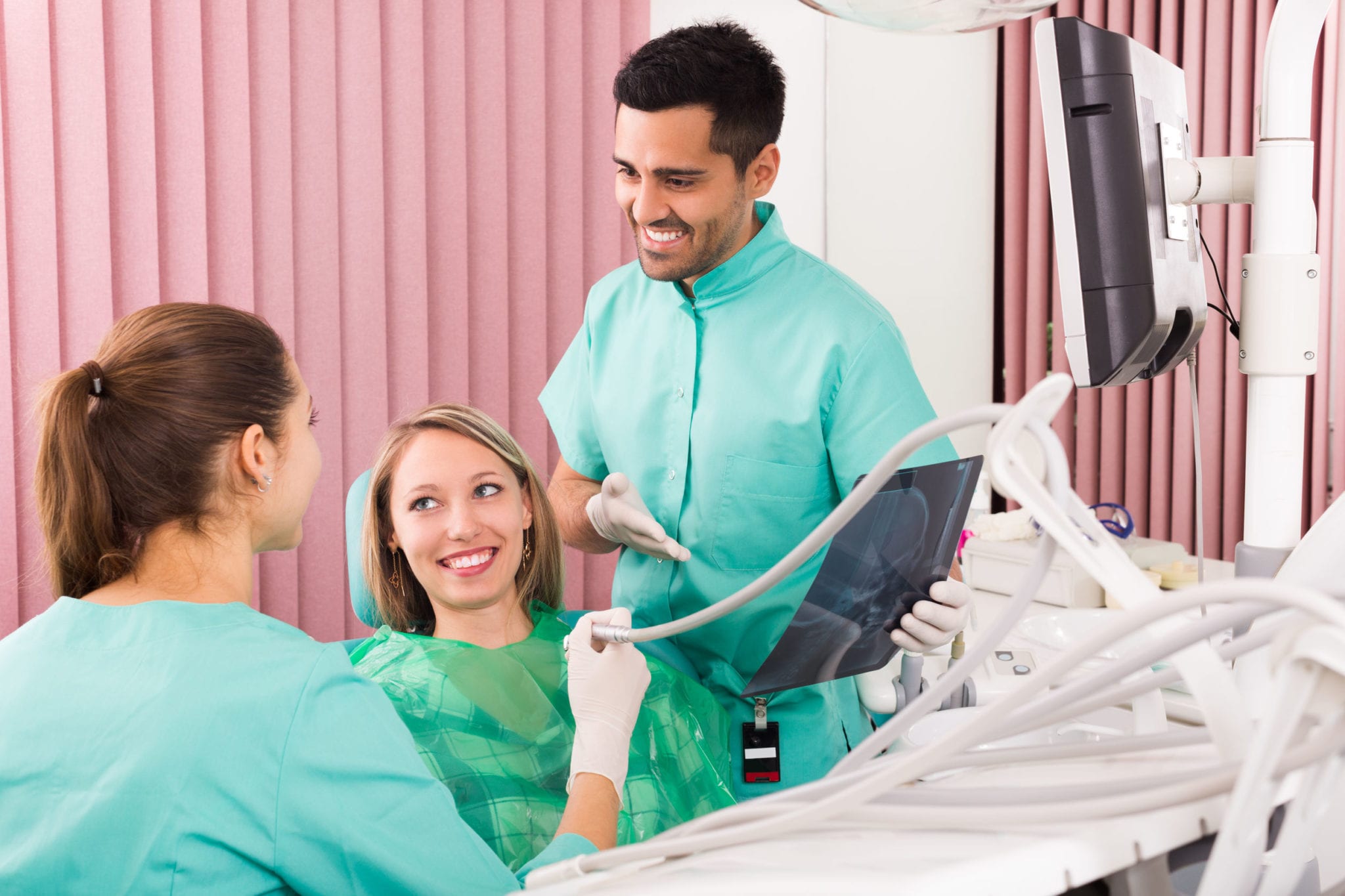
Getting x-rays. The procedure where a medical professional shoots radiation – radiation! – through your body in order to get a picture of your skeletal system.
When you put it that way, it sounds like something a mad scientist would do. After all, isn’t radiation supposed to be really bad?
Exactly how dangers are dental x-rays? Do we really need them?
In this post, we’re going to answer these questions and cover your safety concerns.
What Is the Purpose of a Dental X-Ray?
A dentist uses a dental x-ray to assess the level of your oral health.
The low-level radiation in dental x-rays allows your dentist to create images of your teeth and gums. These images will indicate problems like tooth decay, cavities, or teeth that aren’t coming in well.
How Often Are Dental X-Rays Needed?
Most patients need a dental x-ray every one to two years. If you have a problem that is progressing, however, you may need them more often. Additionally, if you are a new patient at a dental office, your dentist may conduct an x-ray to get familiar with your oral health.
Children are a bit different. They typically need x-rays more often than adults since their teeth are still growing. A pediatric dentist uses x-rays to determine if a child’s teeth need to be pulled to allow room for adult teeth.
What Risks Are Associated with Dental X-Rays?
As mentioned above, dental x-rays use radiation, which always carries some risk. However, the level of radiation is considered so tiny that the risk of being exposed to radiation is very low.
In plain English, dental x-rays are safe for almost all individuals.
Why is that “almost” there? Because pregnant women should not get dental x-rays due to the risks they present to developing babies. If you believe you may be pregnant, make sure to let your dentist know before an x-ray is conducted.
What Is Involved in Getting a Dental X-Ray?
To protect you from radiation exposure, your dentist will place a weighted covering made from lead over you as you receive the x-ray. This covering protects your vital organs from radiation exposure. If you have a thyroid condition, your dentist may also use a lead collar to protect your thyroid.
Additionally, your dentist or dental hygienist may place papers in your mouth to help capture x-rays. You will need to hold still while the x-ray is taken. The entire process takes only a few minutes and is usually conducted prior to a dental cleaning.
What Are the Different Types of Dental X-Rays?
Your dentist may use different techniques to capture various images of your teeth.
Bitewing x-ray. For this one, special paper is places in your mouth to look for cavities in-between your teeth.
Occlusal x-ray. If your dentist asks you to close your jaw during the x-ray, you are receiving an occlusal x-ray. This type of x-ray shows your dentist all your teeth in one view and indicates any abnormalities with your palate. It also checks how your upper teeth line up with your lower teeth.
Panoramic x-ray. This type of x-ray rotates around your head and checks out problems in your jaw or with your wisdom teeth or dental implants.
Periapical x-ray. Finally, this one shows two teeth from crown to root.
What Happens After a Dental X-Ray Is Taken?
Your dentist will review the images and look for any discrepancies. After your cleaning, your dentist may show you the x-rays. If any problems are detected, your dentist will discuss treatment options with you.

If it’s been a while since you had a dental x-ray, consult with your dentist. Not only are they safe, the x-ray will help your dentist treat any problems you may be experiencing.






